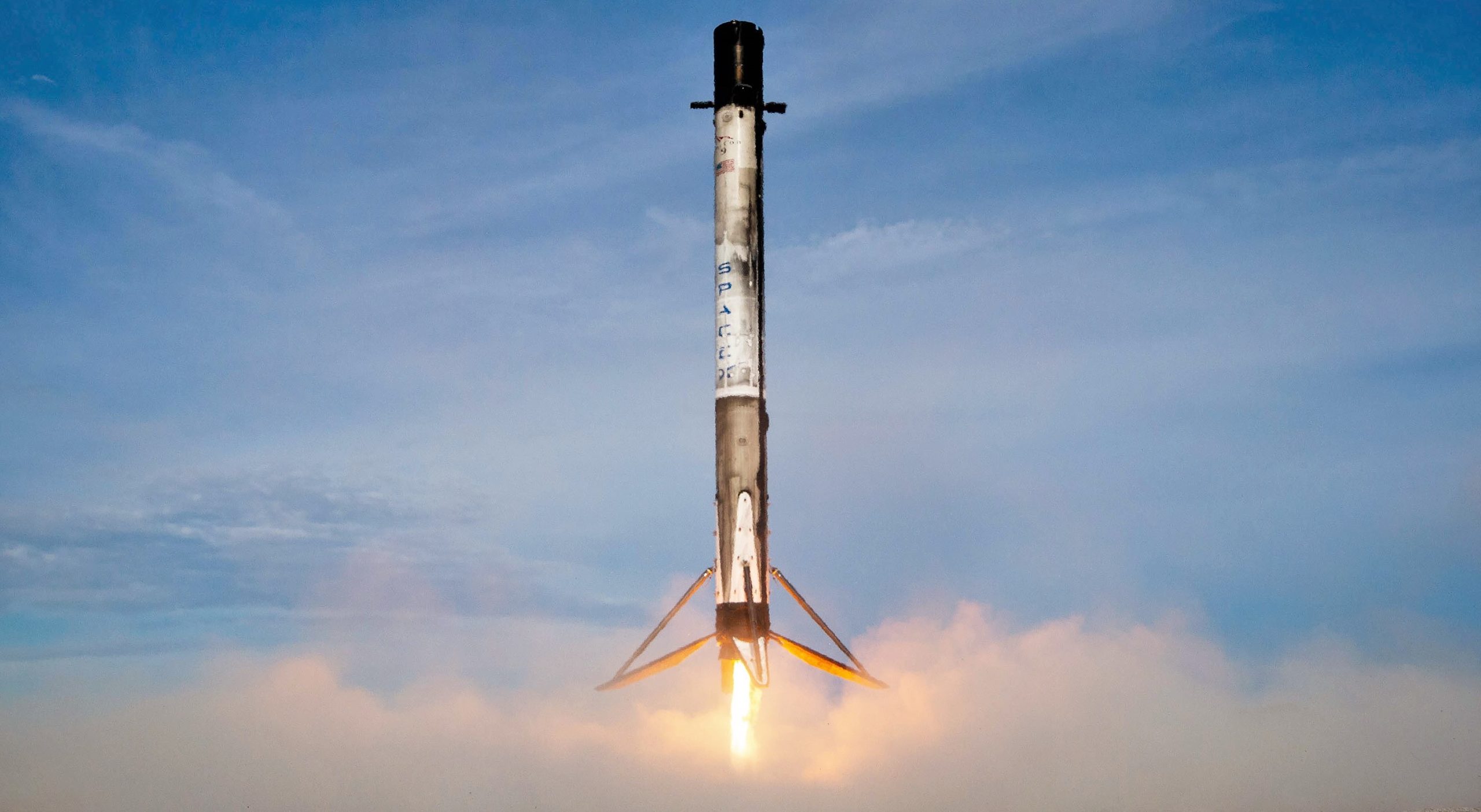
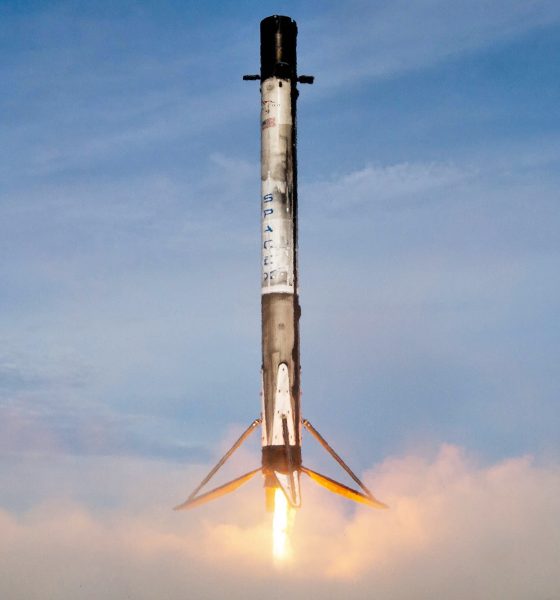
News
SpaceX Starlink launch ready to set crucial rocket reusability record on Monday
One of SpaceX’s newest Falcon 9 rockets is just a day away from setting one of the most important rocket reusability records after successfully firing up its booster engines – the last major step before the third Starlink launch of 2020.
Delayed two days from its original February 15th target, Falcon 9 is now scheduled to lift off no earlier than (NET) 10:05 am EST (15:05 UTC) on February 17th, carrying SpaceX’s fourth batch of upgraded Starlink v1.0 satellites (Starlink V1 L4). The company’s fifth dedicated Starlink launch overall, Falcon 9 booster B1056 will launch for the fourth time in support of the Starlink V1 L4 mission, becoming the fourth SpaceX rocket to do so in barely three months. While still impressive and important, B1056’s fourth mission could be record-setting for an entirely different reason.
Designed to enable at least 10 flights per booster with minimal refurbishment in between, SpaceX’s latest Falcon 9 ‘Block 5’ upgrade debuted in May 2018 and has enabled a marked improvement in both reliability and reusability. One record set just a month after that debut – and, unintuitively by a pre-Block 5 booster – has nevertheless stubbornly held over the 20 months since then. Known as booster turnaround time, the measure effectively represents the practical limits of a given rocket’s reusability by measuring how long it takes any specific vehicle to launch, be recovered, and launch again. With a little luck, Falcon 9 B1056 could break SpaceX’s existing turnaround record by a healthy margin just a few hours from now.
In first place, Falcon 9 Block 4 booster B1045 holds SpaceX’s standing booster turnaround record after launching back-to-back NASA missions just 71 days apart in April and June 2018. In second place, two Falcon Heavy Block 5 boosters (B1052, B1053) and one Falcon 9 Block 5 booster (B1048) are tied, each having managed 74-day turnarounds.
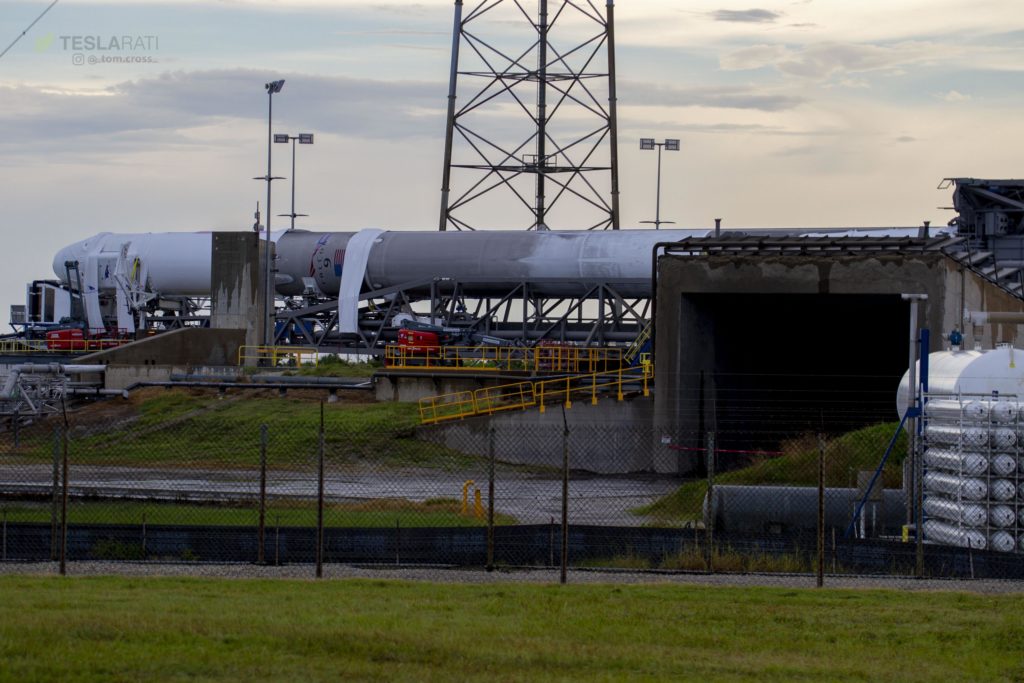

Now, Falcon 9 booster B1056 could potentially break SpaceX’s 71-day record by almost 9 days (15%) in spite of the fact that it has already performed three orbital-class launches in the last 10 months. Additionally, its third and most recent launch was a high-energy satellite mission that put B1056 through a relatively fast and hot atmospheric reentry, whereas Falcon 9 B1052, B1053, and B1045 all set their turnaround records after comparatively gentle inaugural launches, reentries, and landings.
This is all to say that B1056 breaking SpaceX’s booster turnaround record makes it feel a bit like the company isn’t really trying to break any internal records and certainly isn’t close to pushing the Falcon Block 5 design to its reusability limits. Some 18 months ago, SpaceX President and COO Gwynne Shotwell revealed that Falcon 9 Block 5 boosters were already down to just four weeks of refurbishment a handful of months after the upgrade’s launch debut.
In the history of orbital-class reusable spacecraft and rockets, NASA’s Space Shuttle Atlantis – backed by an annual operations budget on the order of $1 billion and hundreds of dedicated refurbishment engineers and technicians – holds a global turnaround record of 54 days. By the time SpaceX breaks that record, Falcon booster reusability will almost certainly be one or even two magnitudes cheaper and simpler than the Space Shuttle.
In fact, if it manages to successfully launch and land later today, Falcon 9 B1056 could be poised to break its own turnaround record later this year, given that Starlink v1.0 launches enable slightly gentler recovery conditions relative to the booster’s previous Kacific-1 mission.
Falcon 9 B1056 is currently scheduled to lift off on its fourth orbital-class launch – carrying 60 Starlink v1.0 satellites – no earlier than (NET) 10:05 am EST (15:05 UTC), February 17th, and will attempt a routine landing aboard drone ship Of Course I Still Love You a bit less than nine minutes later. Some 30-45 minutes after launch, Falcon 9’s payload fairing halves – having reentered Earth’s atmosphere and deployed parafoils – will attempt their third simultaneous landing in the nets of twin recovery ships GO Ms. Tree (formerly Mr. Steven) and Ms. Chief. Tune in to SpaceX.com/webcast around 9:50 am EST (14:50 UTC) to catch Falcon 9’s Starlink V1 L4 launch live.
Check out Teslarati’s Marketplace! We offer Tesla accessories, including for the Tesla Cybertruck and Tesla Model 3.

News
Tesla Cybercab test fleet expands in Austin and Bay Area
In total, the Robotaxi fleet is comprised of 139 total vehicles in both Austin and the Bay Area. The vast majority of these units are Model Y cars, but the Cybercab is the most recent addition to the fleet.
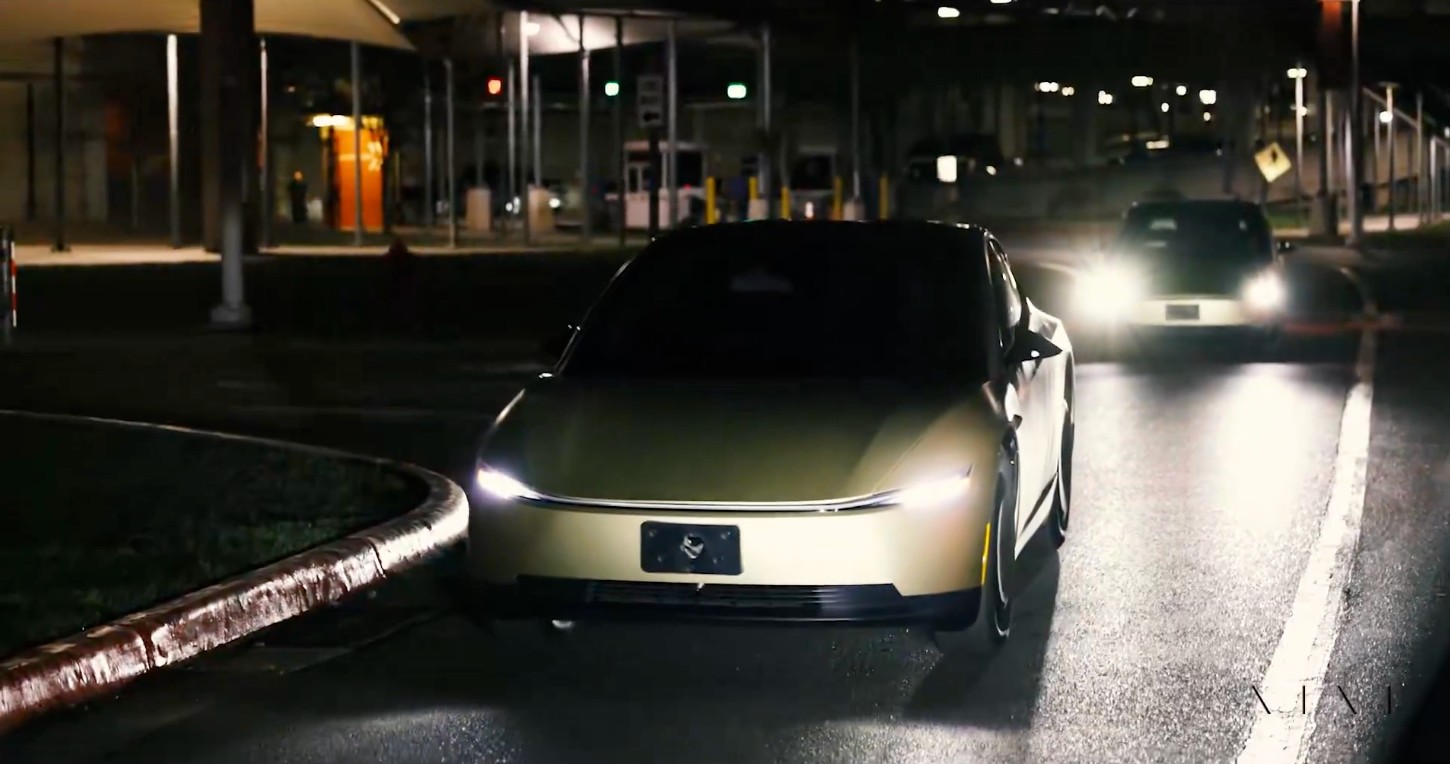
Tesla has expanded its fleet of Cybercab test units in both Austin and the Bay Area of California, as the vehicle is heading toward the first production stages, hopefully early this year.
As the first few units were spotted in Austin late last year, Tesla is now operating seven total Cybercab units in testing, three of which were spotted over the weekend in Texas. Bay Area testing just started on January 3, with both units also being added to the fleet on Saturday and Sunday.
In total, there are seven Cybercabs now operating, according to Robotaxi Tracker, each with different license plates that have been observed over the course of the last several weeks; the first unit was spotted in Austin on December 18.
The future should look like the future, indeed.
The Cybercab really changes the look of the roads, but without the shock factor of the Cybertruck. It’s a pretty good balance, imo.pic.twitter.com/PM0KbjzhxR
— TESLARATI (@Teslarati) December 22, 2025
The expansion of the Cybercab test fleet is a slow but steady process that Tesla is taking to get the car on public roads ahead of its initial production stages.
CEO Elon Musk said last week that Tesla has already started some test production phases of the vehicle at Gigafactory Texas, which is located outside of Austin.
Tesla Cybercab tests are going on overdrive with production-ready units
However, it will likely be some time before Tesla actually adds it to the fleet for rides that are available to the public. Tesla plans to build it without a steering wheel or pedals, so the company will have to reach Level 5 autonomy at that point before customers can hail rides and take it to their destination.
In total, the Robotaxi fleet is comprised of 139 total vehicles in both Austin and the Bay Area. The vast majority of these units are Model Y cars, but the Cybercab is the most recent addition to the fleet.
News
Tesla Germany’s “Giga Train’s” improved service gets rave reviews
As per recent reports, Tesla’s free “train”Giga Train” service will increase its daily trips to six starting this week.
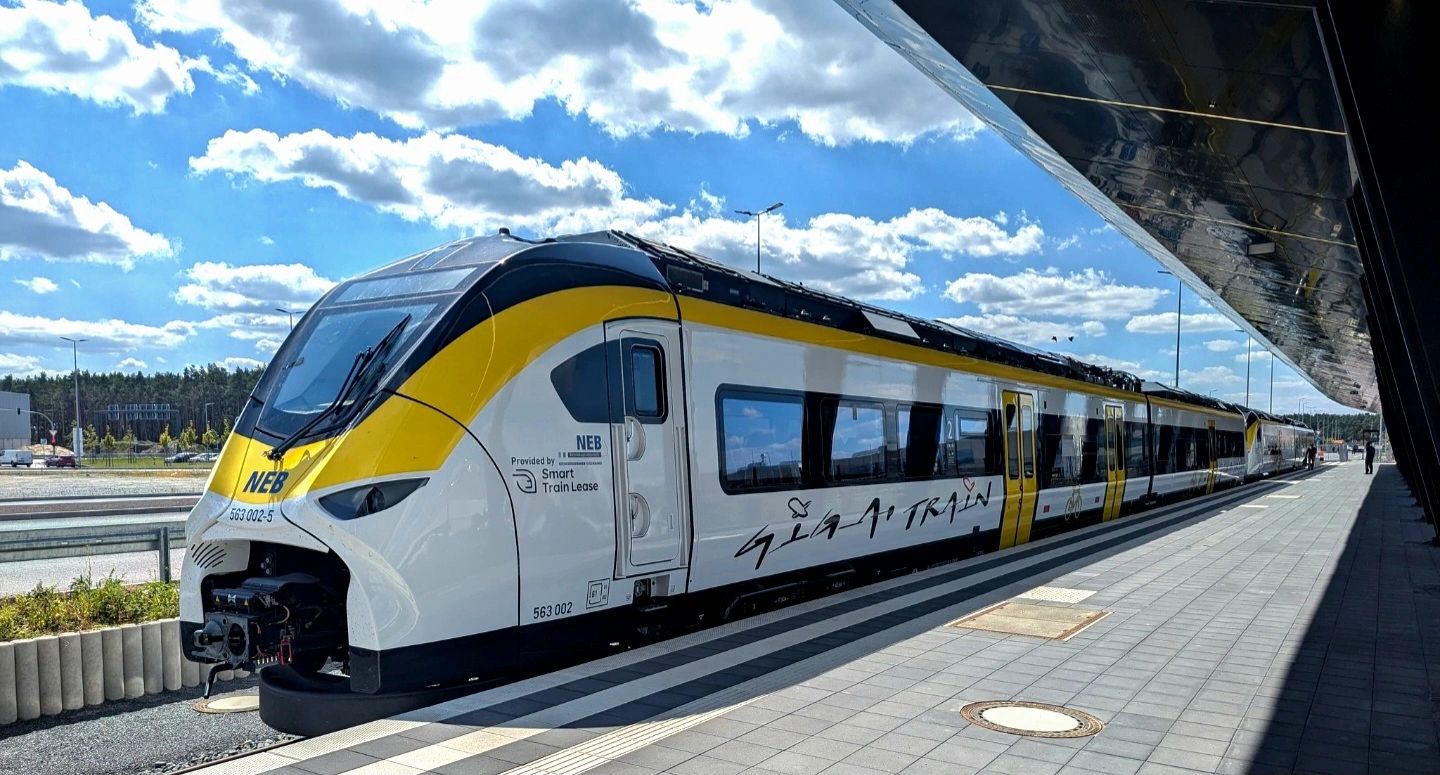
Tesla has expanded its employee shuttle service from Berlin Ostbahnhof East Station to the Gigafactory Berlin-Brandenburg. As per recent reports, Tesla’s free “train”Giga Train” service has increased its daily trips to six starting this week.
The service has so far received positive reviews from the facility’s employees, some of whom noted that the upgraded shuttle train has reduced their travel time by a notable margin.
Giga Berlin’s expanded shuttle service
As noted in a rbb24 report, Giga Berlin’s free shuttle train now operates six times daily, up from one previously. The service also goes directly to the Model Y production facility without stopping at other stations. Tesla employee Dené Schunck described the service to rbb24 in a comment: “The shuttle goes directly to the factory site, without any transfers, which reduces the commute time for our employees by almost half,” Schunck stated.
Operated by Ostdeutsche Eisenbahngesellschaft (Odeg) after switching from Niederbarnimer Eisenbahn (NEB), Giga Berlin’s shuttle train, which also stops at Ostkreuz and Erkner, remains free for all riders, including non-Tesla employees. It has been fully funded by Tesla Germany since September 2023.
Employees praised the changes: One Giga Berlin worker stated that it “definitely makes the journey easier” because employees “used to need two hours for the round trip from Berlin, but now it’s significantly faster.”
Tesla Germany’s previous comments
In late 2025, reports emerged stating that Tesla Germany will be expanding its shuttle train service by adding direct rail trips from Berlin Ostbahnhof to Giga Berlin-Brandenburg. In a comment, Tesla Germany stated that the updated service would mirror the shift changes for the Model Y factory’s employees.
“The service includes six daily trips, which also cover our shift times. The trains will run between Berlin Ostbahnhof (with a stop at Ostkreuz) and Erkner station to the Gigafactory,” Tesla Germany noted.
At the time, Tesla Germany also stated that despite construction being done at Fangschleuse and Köpenick stations, the route of the Giga Train has been optimized to maintain a predictable 35-minute travel time. This should provide Tesla Germany’s employees with a convenient way to travel to and from Giga Berlin.
Elon Musk
Tesla stands to gain from Elon Musk’s rekindled friendship with President Trump
“He’s 80% super genius and 20% he makes mistakes, but he’s a good guy. He’s a well-meaning person.”

Tesla CEO Elon Musk and President Donald Trump are back in each other’s good graces, and after a lengthy period where the two were at odds, the pair seemed to make up back in September.
The two were spotted at dinner at Trump’s Mar-a-Lago estate in West Palm Beach over the weekend, which was followed by a press conference on Air Force One, where the President called Musk, “great.”
He continued:
“He’s 80% super genius and 20% he makes mistakes, but he’s a good guy. He’s a well-meaning person.”
Musk previously had a position in Trump’s White House, as he was in charge of reducing government spending and waste by leading the Department of Government Efficiency (DOGE). Musk stepped back from his role in the government last year to focus on Tesla and SpaceX, as well as other projects.
Trump tonight on @elonmusk: “Elon’s great. He’s 80% super genius and 20% he makes mistakes, but he’s a good guy. He’s a well meaning person.” pic.twitter.com/QUprw06bie
— Sawyer Merritt (@SawyerMerritt) January 5, 2026
However, Musk, back in Trump’s good graces, stands to get some assistance for Tesla from the White House moving forward, especially as he and the President are back to being friends and allies.
Reduced Scrutiny from a Regulatory Standpoint
Tesla has been the subject of several National Highway Traffic Safety Administration (NHTSA) probes, including ones that dive into Autopilot and Full Self-Driving and incidents involving the two.
Trump has already initiated a more relaxed environment for autonomous vehicle oversight. Last January, he proposed a voluntary framework system for self-driving vehicles, which reduced barriers for companies involved with autonomy.
In April, he relaxed crash reporting and exemptions for autonomous vehicles, creating a clearer pathway for companies to innovate and easing compliance burdens.
In September, Transportation Secretary Sean P. Duffy led efforts to update FMVSS, eliminating redundant human-driver requirements. This aimed to create a single national standard, boosting deployment and eliminating much of the bureaucracy that stalls innovation.
Favorable Autonomous Vehicle Framework
Some of the moves that were mentioned previously will assist Tesla in rolling out its Robotaxi network across the country, and although it currently has to go through the process on a state-level, things could become easier for Tesla and other companies exploring self-driving vehicles.
Musk could have a direct line to Trump that would help create fewer regulatory barriers for the companies involved in developing autonomous vehicles, which would directly benefit Tesla, but also its competitors like Waymo.
Protection from International Competition via Trade Policies
It is no secret that the President is focused on domesticating manufacturing, AI efforts, and everything in between. This is enforced by the tariffs the White House enforced last year, which have prioritized U.S.-based companies.
This could shield Tesla from potential foreign competitors, especially ones like BYD, which have been formidable opponents.
Overall, these gains stem from a more aligned political environment, where Musk’s influence could prioritize deregulation over enforcement; this leads to more innovation and relaxed regulations, but there are some risks. However, outcomes are dependent on the depth of President Trump and Musk’s reconciliation.
Long-term benefits to Tesla would require concrete policy actions.








